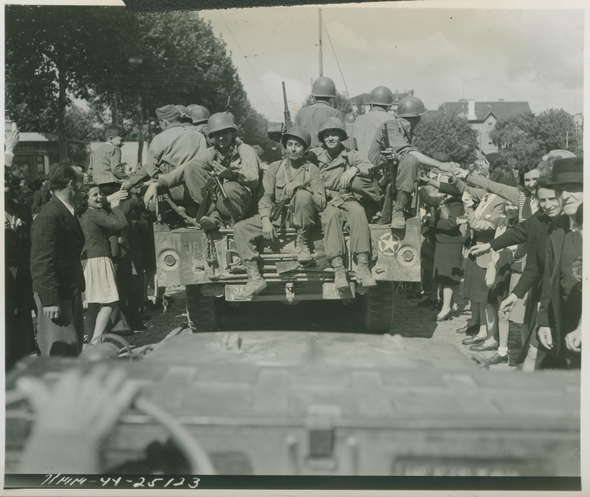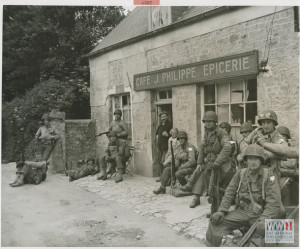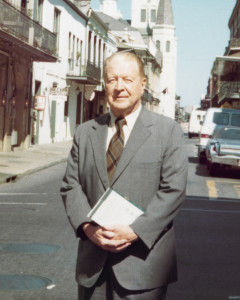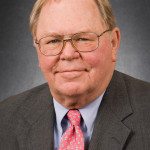COUNTDOWN TO ROAD TO BERLIN- EXHIBITS WITHIN NORTHERN EUROPE: BREAKOUT AND LIBERATION GALLERY
In our last blog post of the Road to Berlin countdown, we covered the Pushing Beyond the Beachhead and Race Across France exhibits within the Northern Europe: Breakout and Liberation gallery. Now, let’s examine the remaining WWII stories that will be told through this immersive gallery and the generous sponsor of these exhibits, the Collins C. Diboll Private Foundation.

French civilians welcome US troops in Lyon, France on September 4, 1944. U.S. Army Signal Corps photograph, Gift of Regan Forrester, from the collection of The National WWII Museum. 2002.337.938
LIBERATION
As the Allies approached Paris, Hitler ordered his troops to burn the French capital. The exhibit Liberation will tell the story of how the French Resistance and ordinary citizens rose in rebellion to retake their city. Unable to crush the uprising, the Germans fled as the US 4th Infantry Division and Free French 2nd Armored Division arrived to join the fight. Liberation will cover this major step in the Allied advance, exploring both the celebration by Parisians of the end of German occupation and the last remnants of enemy resistance which remained in the following days.

Exhausted from their rapid advance inland from the Normandy beachhead, U.S. soldiers relax for a few minutes in Normandy, France in June 1944. U.S. Army Signal Corps photograph, Gift of Regan Forrester, from the collection of The National WWII Museum. 2002.337.938
LIFE OF A GI
Life of a GI will give visitors insight into the world of the foot soldier by examining aspects of their daily lives. The exhibit will explore topics such as what life was like in a foxhole, and showcase GI loyalty to their units and the various tools used by infantrymen. Many primary artifacts will be featured in Life of a GI including photos, letters, utensils, field rations, mess kits, gas masks, playing cards, and prayer books, all conveying the practices and sacrifices experienced by Allied troops during the war in Europe.
OPERATION MARKET GARDEN/LOGISTICAL CHALLENGES
Operation Market Garden was an ambitious strategy devised by British Field Marshal Bernard Montgomery and supported by Eisenhower. This exhibit will explore the Allied attack that took place in Holland in September 1944, and the logistical challenges that dogged the operation. Allied airborne forces were to seize a narrow route of elevated roads and river bridges which would allow armored units to punch through into Germany. Instead, despite many heroic efforts and early gains, the Germans ultimately prevented outnumbered British paratroopers from securing the vital bridge at Arnhem while the American attack on Nijmegen stalled. The Allies’ hopes for a quick advance through the Netherlands and a quick end to the war were dashed.
NO END IN SIGHT
No End In Sight will discuss the difficult months that the Allies faced in fall 1944 as they pressed onward toward Germany. The German forces intensified their resistance along the front, and the Allied troops became bogged down in the heavily defended Hürtgen Forest and in the Vosges Mountains. The Allies launched a risky offensive to seize key bridges in the Netherlands and cross the Rhine River, but Operation Market Garden failed. Casualties were high and supply lines were overstretched. Visitors will learn how with the approach of winter any hope of concluding the war by year’s end evaporated and the Allied advance slowed to a crawl.
ADVANCE INTO GERMANY
Advance Into Germany will introduce visitors to the trials faced by Allied forces after the failure of Operation Market Garden as they continued to fight across Western Europe. As the Allied advance slowed to a halt along the heavily defended German Siegfried Line, some of the fiercest fighting yet to occur in the war took place in the dense Hürtgen Forest on the Belgian-German border. Even though American forces captured Aachen, the first German city to surrender in October 1944, the drawn out operation provided a bleak forecast of the battles still ahead. Some units had spent months in combat, such as the famed 30th Infantry Division, which was nominated for a presidential citation for its exemplary service as the unit suffered more than 15,000 casualties. Despite the many setbacks, this exhibit will discuss the continued determination of the Allies to reach Germany.
Donor Spotlight- Collins C. Diboll Private Foundation
These exhibits within the Northern Europe: Breakout and Liberation gallery have been made possible through a generous gift from the Collins C. Diboll Private Foundation. Born to Collins Cerrè Diboll and Marry Jesse Diboll, Collins Cerrè Diboll, Jr. spent his youth on Jefferson Avenue in Uptown New Orleans. His father was a partner in one of New Orleans’ leading architectural firms, Diboll and Owen, and his mother was a talented singer.
Collins attended a variety of schools including the prestigious Rugby Academy on St. Charles Avenue, and also the Gulf Coast Military Academy in Gulfport, Mississippi. Collins graduated from Tulane’s School of Architecture and joined his father’s firm where he practiced until his death.
Collins was very private about his philanthropy during his lifetime, so many were surprised when he left the bulk of his estate to form the Collins C. Diboll Private Foundation when he passed away in 1987. Since that time, Collins’ foundation has distributed millions of dollars to various charities, most of which are situated in New Orleans.
The Collins C. Diboll Private Foundation has generously sponsored exhibits within the future Northern Europe: Breakout and Liberation gallery as well as the Museum’s digitization project. When deciding which organizations will be beneficiaries of their philanthropy, the trustees of the foundation, including Herschel L. Abbott, Jr., and Donald L. Diboll always ask themselves, “What would Collins support?”
The trustees knew they wanted their gift to The National WWII Museum to tell the story of the European Theater because that is where Collins served in the Army Corps of Engineers. Friends of Collins also recall stories he told about jumping the hedgerows in Germany. A re-creation of these hedgerows will be an essential feature of the Foundation’s named exhibits, showing that Allied forces had to continually overcome great obstacles.
David remembers coming to the Museum with former foundation Trustee Donald W. Diboll, who was one of the three original trustees of the Collins C. Diboll Private Foundation and also a cousin of Collins. David enjoyed watching Donald see the Museum and observe the progress the Museum has achieved through the foundation’s support.
The foundation’s gift to support the Museum’s expansion was made after Donald passed away last year, but David feels confident that “Donald would have enjoyed it too.”In the meantime, Donald’s son, Don Diboll, has joined David and Herschel as a co-trustee of Collins’ foundation and is delighted with the newest gift.
The Collins C. Diboll Private Foundation leads by example. David Edwards noted the importance of remembering “the spirit of the people and the time of WWII. They are the vanishing generation, so we should honor them while they are still around to see it. For any person of Collins’ age, the war was part of their lives. The war touched everyone and no one was exempted.”
David says that the trustees of the Collins C. Diboll Private Foundation hope that others will “see that a great guy like Collins can do some pretty great things for the world in which he lived. Collins would be happy that we are supporting The National WWII Museum.” We are extremely grateful for the leadership of Collins C. Diboll Private Foundation and for the foundation’s generous support for preserving the story of Collins and other WWII veterans for the benefit of generations to come.
- Collins C. Diboll Private Foundation Trustee Donald Diboll
- Collins C. Diboll Private Foundation Trustee David F. Edwards
- Collins C. Diboll Private Foundation Trustee Herschel L. Abbott, Jr.
Post by Lauren Bevis, Donor Relations Manager, and Ashley Nash, Prospect Coordinator.
- Posted :
- Post Category :
- Tags : Tags: Road to Berlin Countdown
- Follow responses to this entry through the RSS 2.0 feed. You can skip to the end and leave a response. Pinging is currently not allowed.








Leave a Reply